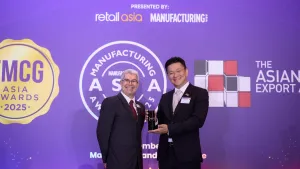
Vietnam manufacturing sector accelerates growth in October
Production levels highest in 15 months.
Vietnam's manufacturing sector gained significant momentum at the start of the fourth quarter, with production levels reaching their highest point in 15 months, an S&P Global survey said.
The S&P Global Vietnam Manufacturing Purchasing Managers' Index rose to 54.5 in October, up markedly from 50.4 in September, signalling the strongest improvement in business conditions since July 2024. Any reading above 50 indicates expansion.
Manufacturers reported sharp increases in both output and new orders during the month, with customer demand improving substantially. New export orders also contributed to growth, rising for the first time in a year, albeit modestly.
Perhaps most significantly, factories expanded their workforce for the first time in just over a year, responding to rising order books and signs of capacity pressures. Backlogs of work increased for the first time in 10 months, reaching the fastest accumulation rate in more than three and a half years.
Andrew Harker, economics director at S&P Global Market Intelligence, said the sector had "moved up a gear" in October. "Positively, the strength of the expansions was sufficient to enable firms to take on extra staff and build inventories of inputs," he noted.
Business confidence also strengthened to a 16-month high, with manufacturers optimistic about the year-ahead outlook amid expectations that new orders will continue rising and plans to expand production capacity.
However, the expansion has come alongside intensifying inflationary pressures. Input costs rose at their fastest pace since July 2024, with around 27 per cent of survey respondents reporting higher prices for raw materials and supply shortages.
Manufacturers passed these costs on to customers, with output price inflation reaching its fastest rate since June 2022—a 40-month high.
Mr Harker cautioned that whilst customers are currently willing to absorb price increases, "this may start to wane should rates of inflation pick up further."
Supply chain challenges also persisted, with adverse weather conditions and flooding contributing to longer delivery times from suppliers. These disruptions lengthened lead times solidly, to the greatest extent since July.
Despite these headwinds, manufacturers expanded their purchasing activity for the fourth consecutive month and accumulated stocks of inputs for the first time in just over two years, suggesting confidence in sustained demand.
















